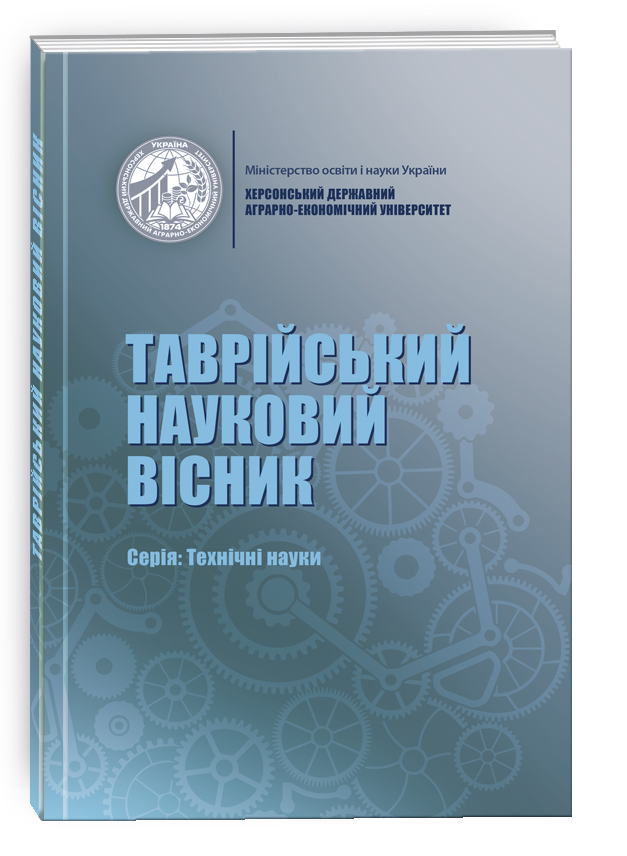TECHNOLOGY OF OBTAINING ANTHOCYAN DYE FROM BLACK ELDER PLANTS
DOI:
https://doi.org/10.32782/tnv-tech.2025.1.51Keywords:
natural dyes, synthetic dyes, dyes, extraction, black elderberry, extract, pomace, anthocyanins, glycerinAbstract
The paper presents the results of the study of anthocyanin dye from black elderberry pomace using a water-glycerol solvent. The study used black elderberry pomace Sambucus nigra collected at the stage of full dosage in the Sumy region in 2024. It was found that the mass fraction of dry soluble substances in the pomace is 14.80±0.2%, the mass fraction of moisture is 49.3±0.2%, the active acidity (pH) is 4.3±0.1, the titrated acidity in terms of malic, citric and tartaric acids is 0.73±0.03%, 0.77±0.03% and 0.82±0.03%, respectively.The technology of anthocyanin dye involves mixing elderberry pomace with potassium sorbate, double extraction in a water-glycerol solution with a hydromodule (1:1) with the addition of citric acid, settling, filtering, mixing the extracts and concentrating in an evaporator at a temperature of 65±1.5ºС to a dry matter content of 35±0.2%. The finished elderberry pomace dye was stored in sterile dark glass bottles at a temperature of 4±2ºС, which ensured its shelf life of 30 days. The resulting elderberry dye is characterized by a slightly viscous liquid of dark red color with a faint odor and sour taste. The density at 20°C is 1080±2 kg/m³. The dye is completely soluble in water and aqueous-alcoholic solutions. Active acidity (pH 3.3±0.1), titrated acidity in terms of citric, malic and tartaric acids is 0.91±0.05%, 0.87±0.05% and 0.98±0.05% respectively. The dry matter content is 35±0.2%, and the concentration of coloring substances is 122.0±0.5 g/dm³, which confirms the high saturation with anthocyanin pigments. During 30 days of storage, the degradation index is 20.5±0.2%, and the stability is 79.5±0.3%, which indicates sufficient stability of the dye and its suitability for use in the production of food and beverages.
References
Cross Talk between Synthetic Food Colors (Azo Dyes), Oral Flora, and Cardiovascular Disorders / A. John et al. Applied Sciences. 2022. Vol. 12, no. 14. P. 7084. URL: https://doi.org/10.3390/app12147084
Silva M. M., Reboredo F. H., Lidon F. C. Food Colour Additives: A Synoptical Overview on Their Chemical Properties, Applications in Food Products, and Health Side Effects. Foods. 2022. Vol. 11, no. 3. P. 379. URL: https://doi.org/10.3390/ foods11030379
Dwivedi K., Kumar G. Genetic Damage Induced by a Food Coloring Dye (Sunset Yellow) on Meristematic Cells ofBrassica campestrisL. Journal of Environmental and Public Health. 2015. Vol. 2015. P. 1–5. URL: https://doi.org/10.1155/2015/319727
Nasri A., Pohjanvirta R. In vitro estrogenic, cytotoxic, and genotoxic profiles of the xenoestrogens 8-prenylnaringenine, genistein and tartrazine. Environmental Science and Pollution Research. 2021. URL: https://doi.org/10.1007/s11356-021-12629-y
The protective effect of natural phenolic compound on the functional and structural responses of inhibited catalase by a common azo food dye / S. Khataee et al. Food and Chemical Toxicology. 2022. Vol. 160. P. 112801. URL: https://doi.org/10.1016/j. fct.2021.112801
Recent advancements in natural colorants and their application as coloring in food and in intelligent food packaging / N. Echegaray et al. Food Chemistry. 2022. P. 134453. URL: https://doi.org/10.1016/j.foodchem.2022.134453
Ярмош Т., Перцевой Ф. Дослідження ефективності гліцерину для екстрагування барвних речовин з бузини чорної. Scientific bulletin of the Tavria State Agrotechnological University. 2024. Т. 14, № 1. URL: https://doi. org/10.32782/2220-8674-2024-24-1-16
Ярмош Т. А., Перцевой Ф. В. Дослідження впливу технологічних чинників на вихід барвних речовин із вижимок бузини чорної. Таврійський науковий вісник. Серія: Технічні науки. 2024. № 3. С. 151–163. URL: https://doi.org/10.32782/ tnv-tech.2024.3.16 9.Пат. на винахід 31491. Україна. МПК C09B61/00A23L1/052. Спосіб вироб- ництва харчового барвника з рослинної сировини / Пилипенко Л. М., Олейник Л. Б., Кожухар В. В., Пиленко І. В. заявник та патентовласник Пилипенко Л. М. – № 98094862 ; заявл. 15.09.1998 р. ; опубл. 15.12.2000 р., Бюл. № 7/2000.
Пат. на корисну модель 129179. Україна. МПК C09B61/00. Спосіб одержання харчового барвника з рослинної сировини – свіжої червонокачанної капусти / Колесніченко С. Л., Шарова І. В., Поплавська С. О., Кисельов С. В. заявник та патентовласник ОНАХТ. – № 201803915; заявл. 11.04.2018 р. ; опубл. 25.10.2018 р., Бюл. № 20/2018.
Стеценко, Н. О. Барвник із соку бузини чорної як джерело функціональних інгредієнтів для виробництва продукції оздоровчого призначення / Н.О. Стеценко // Modern Advances in Organic Synthesis, Polymer Chemistry and Food Additives : book of abstract International scientific online conference, Lviv, December 7-8 2021. – Lviv : Lviv Polytechnic National University, 2021. – P. 122
Пат. на корисну модель 98928. Україна. МПК C09B61/00. Спосіб одержання антоціанового барвника /Дишкантюк О. В., Москвічова О. М. заявник та патентовласник одеська національна академія харчових технологій – № u201413071; заявл. 05.12.2014 р. ; опубл. 12.05.2015 р., Бюл. № 9/2015.
Нові сорти садових культур селекції НУБіП України. URL:https://nubip.edu. ua/node/120586







